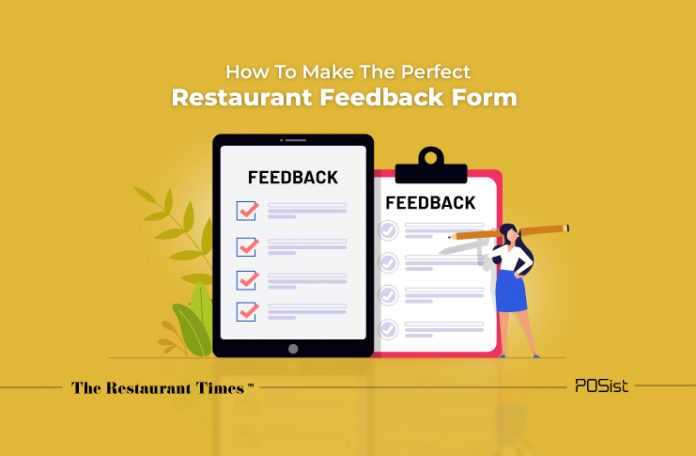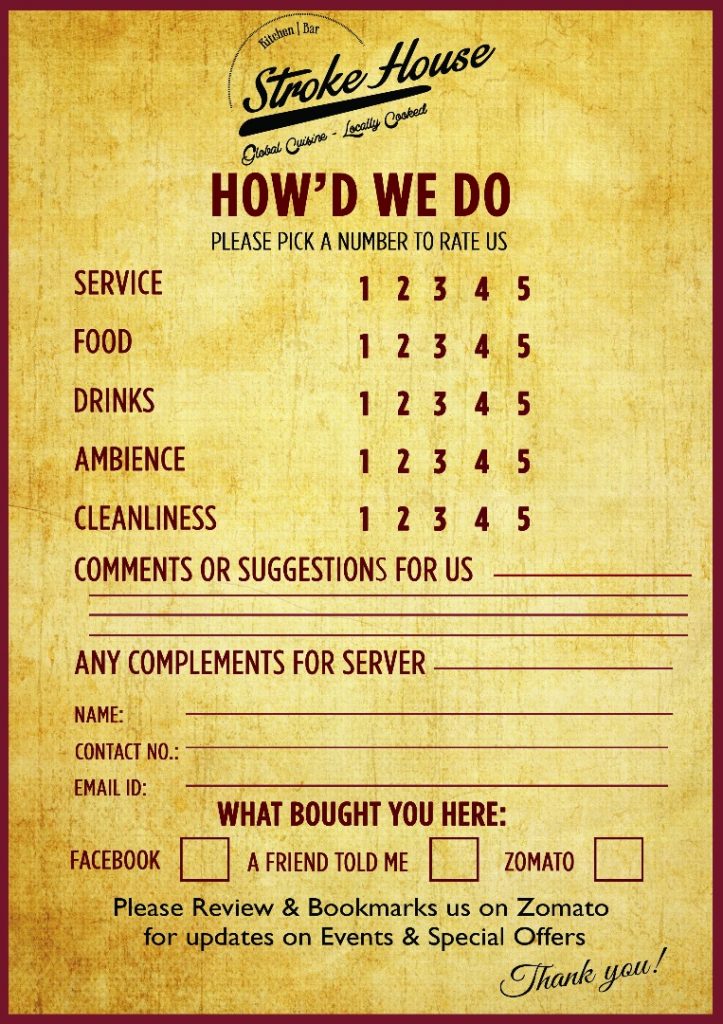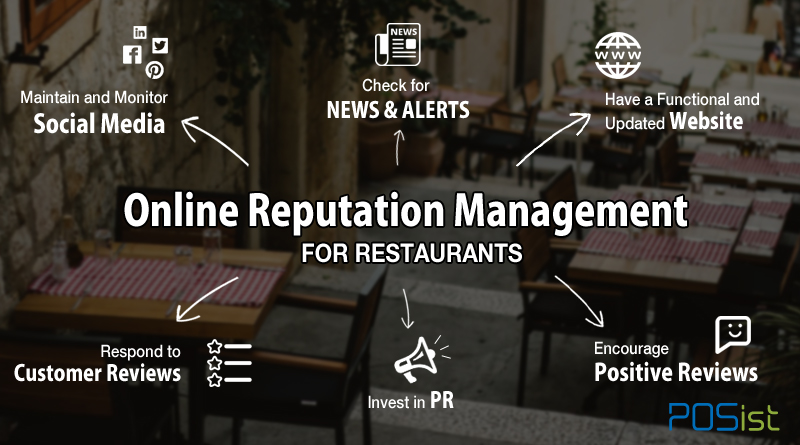Customer feedback has a vital role in shaping the overall structure of a restaurant business. The opinions of your customers help in improving your restaurant business, which in turn enhances customer satisfaction and enriches their experience. An essential aspect in the foodservice industry, customer feedback, if collected and appropriately implemented, can positively impact the bottom line of a restaurant business. In this article, we have provided some fruitful tips that will help in creating an insightful restaurant feedback form, which will fetch you more responses and useful feedback in improving your restaurant business.
Tips To Create The Perfect User-Friendly Restaurant Feedback Form That Is Insightful For Your Business
Customer feedback, when taken properly and pondered upon, makes the customer feel valued. Choosing the right measures in improving your restaurant based on the feedback and reviews received helps you in building strong customer relationships. However, the first step in the customer feedback cycle is the strategic creation of a restaurant feedback form that customers actually fill. The best customer feedback forms are user-friendly, have straightforward instructions, and provide insightful data that helps the restaurants in molding their business. Implement these below-mentioned steps in creating a classic restaurant feedback form.
1. Keep It Precise
To gain a better understanding of your guest’s experience with your brand, ensure that the feedback is short, crisp, and precise. Include a limited set of questions that are relevant to your customers. Ask them about the overall experience, quality of food and service, cleanliness standards, and remember to offer extra free space to capture additional comments from them. If you’re using a rating scale to record the answers of your customers, ensure to keep the rating scale consistent for each question.
2. Make It Easy To Understand
Even though specific, contextual questions offer ease of convenience to the customers, a lack of natural language may put them off. Excessive use of formal language or too much vagueness in the questions will make it difficult for users to understand. While framing the feedback form, keep the tone simple, use plain, easily understandable language, and avoid the use of jargon. Make the content engaging by adding your brand logo and use tones and catchphrases that resonate the most with your brand.
3. Don’t Make The Questions Mandatory
Digital feedback forms often don’t allow submission until all the fields are filled. There may be times when a customer would not be willing to answer a question. By making all the fields in the digital feedback form compulsory, users may abandon the survey even before they complete it. Make it easy for the users to provide feedback by removing the mandatory field from the questions.
If a user doesn’t know the answer to a specific question, don’t limit them from submitting the feedback form. In the end, remember that a customer feedback form may be extremely crucial for improving your business, but it is a voluntary act that customers do as an additional favor.
4. Amplify Social Feedback
Social feedback is increasing in importance and becoming a definite form of advertising as well. Keeping aside the traditional rulebook of creating digital or paper-based restaurant feedback forms, restaurateurs can tap the reservoir of candid feedback on social media platforms in the most creative way.
Open-ended questions in the form of direct comments or mentions can help restaurant businesses to collect unfiltered and real-time user opinions. You can gather insightful data through built-in polling tools included on all major social media platforms such as Facebook, Twitter, LinkedIn, and Instagram. Build a defined structure to conduct the questions, and don’t forget to use the fun element to capture the interests of social media users!
5. Add A Visual Appeal
Utilize these effective restaurant feedback-form design tips that will underline the visual appeal and encourage more patrons to fill the survey.
- When designing an online feedback form, don’t add random images or headings. Keep the message short, crisp, and add a call-to-action button. The no-nonsense format would provoke more responses and engagement from the users
- Add plenty of white space to make your form appear uncluttered and visually appealing. This will optimize the time taken in filling up the form and make it easier for users to fill the form.
- Label the form fields and place each label close to its corresponding field to decrease the time and effort in completing the form.
Follow a logical and interactive flow in strategically placing the questions so that users can relate better and answer as per their experience.
Best Practices To Follow While Creating A Restaurant Feedback Form
To augment the likelihood of hearing back from your customers, consider these following measures.
1. Automate The Feedback Process
In the era of technological innovations, replacing paper-based feedback forms with digital forms only makes a lot of sense. Replace the traditional paper-based feedback forms with automated feedback apps to simplify the process for customers. Restaurant feedback apps eliminate the redundancy that is otherwise observed in recording critical insights from the paper-based feedback forms.
These apps automatically sync the customer information in the CRM dashboard and generate customized, the customer (orders history) specific feedback form that makes the review more accurate and precise. Based on the customer responses collected on a digital medium, you can run targeted campaigns and create loyalty programs to retain your potential customers.
2. Personalize The Feedback
Adding a personalized touch in the SMS or emails to be sent to the customers will make them feel valued and increase the chances of getting a response. Use personalized tags to address the customers, followed by the link to the feedback. Once when the customer fills the restaurant feedback form, regardless of the nature of the feedback, thank your customers.
Customers appreciate it when they get rewarded for spending their time. When a customer takes out time to fill the feedback form, offer them a special reward such as a discount coupon or free beverage or dessert on their next visit. Offering incentives would encourage customers to participate more and elevate their experience.
3. Schedule The Timing
More often than not, customers tend to neglect feedback forms because of the lack of time. In dine-in restaurants, hand over the feedback form to the customers soon after they finish their meals and during the time their bill is being processed. For takeaway or delivery orders, the feedback form should neither be sent immediately after the order is delivered nor so late that the customer completely forgets about it. A proper schedule in collecting the feedback at the right moment can do wonders in increasing the responses.
4. Make It Compatible
A digital feedback form must be responsive and compatible across various devices. Customers are most likely to fill the online feedback forms on their mobile devices, and it is imperative to adjust the feedback form templates automatically according to the user’s device. For enhanced user experience, ensure that the format and quality of the feedback forms are compatible with desktop and tablet devices as well.
If you listen to your customers and take careful measures in recording their responses, you can transform every aspect of your restaurant and take your business to new heights. With these clear, simple methods of collecting customer feedback, improvise your business, and embark on your business expansion goals!


















